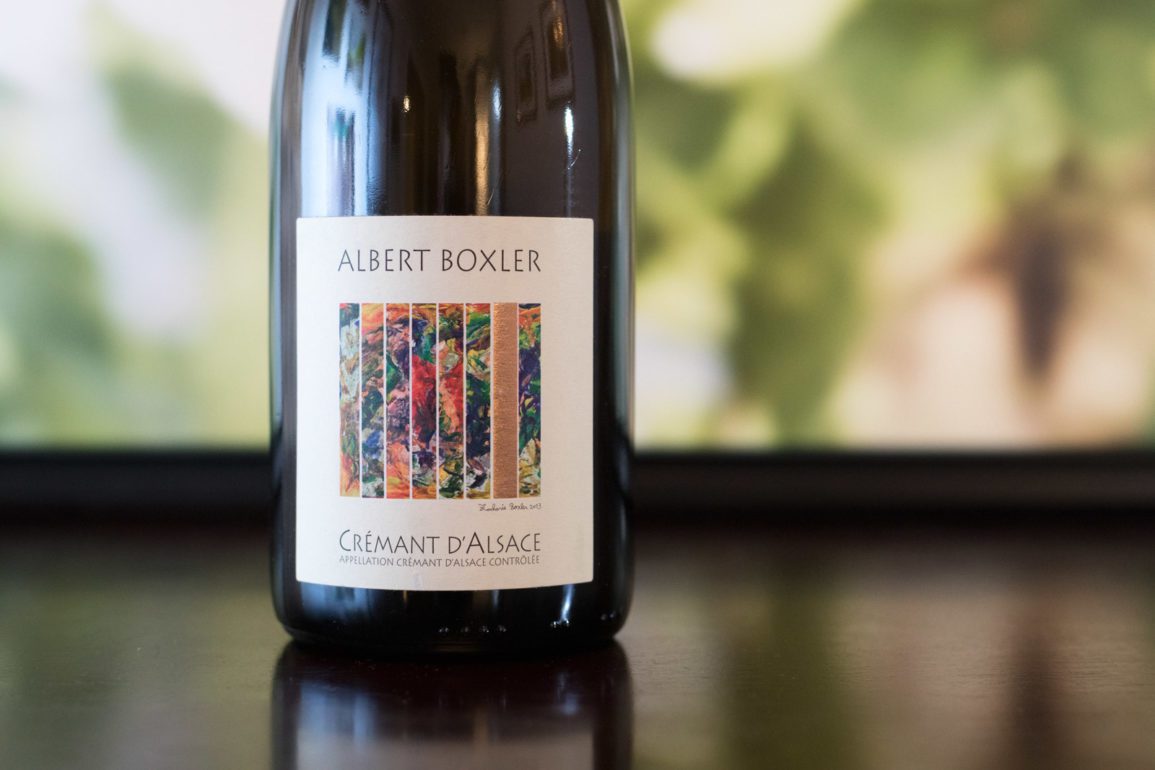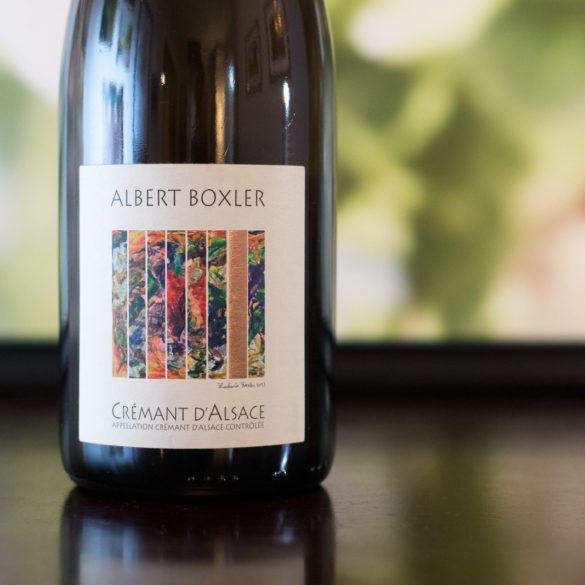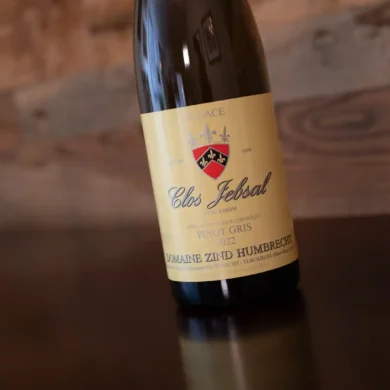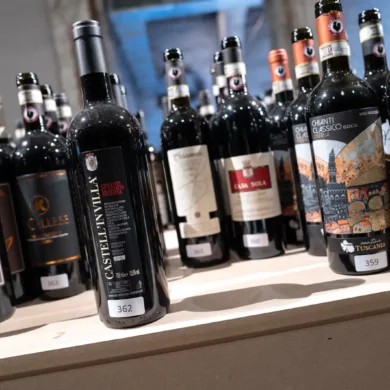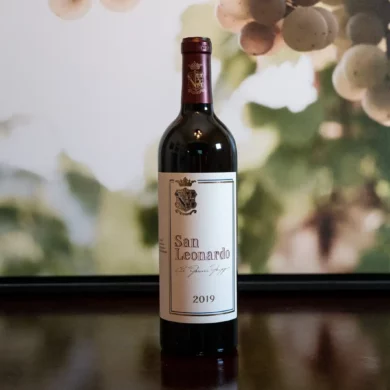Crémant d’Alsace rarely snags a headline. Made from nearly any white grape grown in the region (plus the red Pinot Noir), this traditional method sparkling wine has a wider swing at the ball than most other French sparkling wines. Tones can be rich or tart, the body can be light or full. Nearly every winemaker in Alsace makes one, which is an unusual caveat given the additional capital, skill and focus needed to make such a wine. It’s not like rosé where you can just throw one together at the crush pad and hope it sells. Good crémant requires vigilence in the vineyard year-round, and discipline and precision in the winery. And that’s just to make good crémant. Great crémant requires magic, and that appears to be what Albert Boxler has with this fantastically rich sparkling wine.
What you’ll notice straightaway is the lees. This wine spends 24 months on the spent yeast cells in the bottle once the secondary fermentation has completed, lending it a richness that will trigger the same primal response that freshly baked bread does. Fine champagne and other exquisite examples of traditional method sparkling wine do the same, but with Albert Boxler’s Crémant d’Alsace, that quality seems to be ultra refined. In fact, by way of comparison, most champagne come up short in this department, especially at this price point. If I am doing bubbles, I am doing hedonism: give me the lees!
But there is also another thread to pull on with this comparison, and it has to do with grapes. Only 20% of this wine is made from a grape allowable in the Champagne AOC formula; a formula, I might add, that has engendered ample grape bias when it comes to sparkling wine. That bias is this: great sparkling wine can only come from Chardonnay, Pinot Noir and Pinot Meunier. Whether it was the champenois that perpetuated this myth, or just luxury brands seeking to carbon copy the champagne formula to other lands, is beside the point. The take away here is that Pinot Auxerrois and Pinot Blanc can play, too, even if they share many of the classic traits of the blend’s key players.
Pinot Auxerrois is a bit of an Alsatian specialty. Descended from the Pinot family and Gouais Blanc, it often does the work of Chardonnay in blends, bringing an arsenal of citrus and honeycomb flavors, with a richness that acts like a bass note to the blend. Pinot Blanc is a white mutation of Pinot Noir, and when handled properly, can lend a lovely momentum to the wine via its acidity. In capable hands, few would notice the difference. (In fact, when it comes to varietal bottling, the two grapes are a tangled mess to sort out. Decanted has a great explainer if you love mysteries).
Which brings us back to Jean Boxler, the winemaker of this historic family domaine who can trace their lineage amongst Alsace’s vines back to 1673. If you’ve ever had the thrill to taste one of his Rieslings, you know his wines are a case study of meticulous care and subtlety. Now transpose that mentality to sparkling wine, and you have perhaps the finest example in Alsace. Savor it.
2014 Albert Boxler Crémant d’Alsace Extra Brut
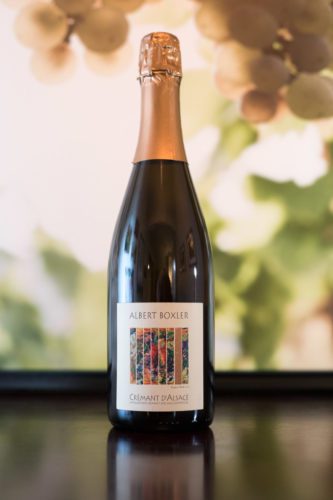 Crémant d’Alsace AOC (Alsace)
Crémant d’Alsace AOC (Alsace)
Grapes: Pinot Auxerrois (50%), Pinot Blanc (30%), Pinot Noir (20%)
Alcohol: 12.5%
Opinion: ★★★★★ (out of five)
• Food-friendliness: Impeccable
• Value: Very Good
Click on the wine icons to learn more
A beginner might like … the profusion of aromas and tones that this wine presents. To me, they were strongly suggestive of fresh baked bread and honeycomb (that’s the lees talking, my friend!), but underneath that initial layer was ample pear and dried apricot. On the finish, I was reminded of cocoa powder and walnuts. This is an exceptional wine that deserves your attention for patio entertaining, ambitious and not-so-ambitious food pairings, Thanksgiving dinner and New Years Eve.
A wine obsessive might like … comparing it side-by-side to the greats of Champagne. Not to see if its better, but to see what it says that’s different and intriguing. I won’t say its on a level with aged Krug, but it can certainly hold its own weight alongside entry-level Billecart-Salmon and Bérèche et Fils. Another winning trait: at $39/bottle, you’d be hard pressed to find a better valued, high-quality sparkler to stock up on. A case of this stuff would go a long, long way.
Notes: This wine is not the current vintage at time of writing (2021, so the 2017 is out). It was provided as a sample by the U.S. promotional press agency for CIVA – Conseil Interprofessionnel des Vins d’Alsace. Learn more about our editorial and sample policy.

